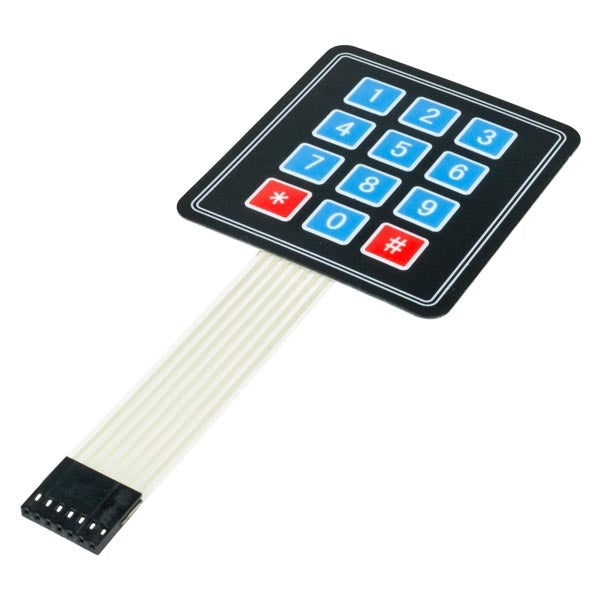Membrane Switch: Reliable, Cost-Effective, and User-Friendly Control Systems
Membrane Switch: Reliable, Cost-Effective, and User-Friendly Control Systems
Blog Article
Understanding Membrane Layer Changes: The Key to Sturdy and Trustworthy Controls

What Are Membrane Layer Buttons?
Membrane switches are a sophisticated option in the world of interface innovation, integrating functionality and style effortlessly. These devices work as an interface in between individuals and digital systems, integrating several components into a compact style. Typically constructed from flexible, slim layers of materials, membrane layer switches are created to reply to touch, making it possible for users to communicate with machinery and electronic gadgets properly.
The main components of a membrane switch include a printed circuit layer, graphic overlay, and a spacer layer that protects against unintended activation. The graphic overlay can be personalized to show brand identity or customer choices, enhancing visual appeals while guaranteeing use. Membrane layer buttons are generally used in numerous applications, consisting of medical devices, consumer electronic devices, and industrial devices, owing to their longevity and resistance to environmental variables such as moisture and dust.
Among the essential advantages of membrane layer buttons is their capacity to endure damage, making them ideal for high-traffic settings. Additionally, they are light-weight and need marginal area, permitting cutting-edge layouts in item advancement. In general, membrane layer changes stand for a effective and practical choice for contemporary digital user interfaces, marrying innovation with user-centric layout concepts.
Just How Membrane Switches Work
The operation of membrane switches hinges on an easy yet effective mechanism that converts customer input into digital signals. When an individual presses the switch, the leading layer flaws, permitting a conductive aspect in the circuit layer to make call with a matching conductive pad on the bottom of the graphic overlay.
The design of membrane layer buttons can vary, however they commonly incorporate domes or tactile aspects to supply responses to the individual, enhancing the total experience - membrane switch. The products utilized in membrane layer switches, such as polyester or polycarbonate, add to their longevity and resistance to environmental elements, including wetness and dust. Moreover, the published circuits are generally encapsulated, which shields them from damage with time.
Benefits of Membrane Switches

Furthermore, membrane layer switches are click this site recognized for their sturdiness. Constructed from durable products, they are resistant to dust, dampness, and physical wear, which substantially extends their life-span compared to conventional mechanical switches. This toughness makes them particularly suitable for high-traffic atmospheres and applications needing durability.
One more substantial advantage is the simplicity of cleansing and maintenance. The smooth surface area of membrane layer switches reduces dust accumulation and is frequently impervious to spills, making them ideal for setups that call for constant sanitization.
Moreover, membrane switches supply a structured profile, bring about a thinner layout that can be incorporated right into numerous devices without including bulk. This feature not only enhances the aesthetic allure however also contributes to a more ergonomic item style.
Applications of Membrane Buttons
Functional and straightforward, membrane buttons discover applications across a vast array of markets, consisting of medical devices, customer electronics, and commercial tools. In the medical area, these buttons are integral to tools such as analysis tools, client surveillance systems, and mixture pumps, where integrity and simplicity of cleaning are important. Their capability to keep and hold up against harsh settings performance makes them perfect for such applications.

In customer electronic devices, membrane layer switches are made use of in items like microwaves, cleaning equipments, and push-button controls - membrane switch. Their sleek layout permits user-friendly interface, boosting the overall individual experience while providing toughness and resistance to tear and wear
Commercial tools additionally gains from membrane check out this site switches, particularly in control panels for machinery and automation systems. These switches offer security against dust and wetness, making certain regular efficiency in difficult settings. In addition, their personalized attributes enable suppliers to customize them to certain operational address needs, enhancing performance and performance.
Picking the Right Membrane Layer Switch Over
When picking a membrane button, it is necessary to consider numerous factors that influence efficiency and suitability for specific applications. The key factors to consider consist of environmental conditions, tactile responses, durability, and style specifications.
First, analyze the operating environment; buttons revealed to wetness, chemicals, or extreme temperatures need details products to make certain long life and performance. Next, examine the requirement for tactile feedback. Relying on individual communication, some applications might profit from a responsive response to validate activation, while others might prefer a non-tactile style for visual reasons.
Sturdiness is another crucial variable; membrane buttons need to be made to withstand frequent use, effects, and abrasion. Ensure the picked button can endure the expected lifecycle, particularly in high-usage circumstances.

Conclusion
In verdict, membrane changes offer as essential elements in the style of long lasting and dependable control systems across numerous industries. The adaptability of membrane switches allows for tailored services that satisfy particular functional needs, strengthening their significance in contemporary innovation.
Membrane changes stand for an essential facet of modern-day interface layout, blending performance with resilience in different applications.Membrane buttons are a sophisticated service in the world of user interface innovation, integrating capability and style perfectly. Typically created from flexible, thin layers of materials, membrane layer switches are made to react to touch, enabling individuals to interact with equipment and digital tools efficiently.
The design of membrane buttons can differ, yet they frequently include domes or tactile aspects to provide responses to the user, enhancing the overall experience.In conclusion, membrane layer changes serve as important components in the style of trusted and resilient control systems throughout various sectors.
Report this page